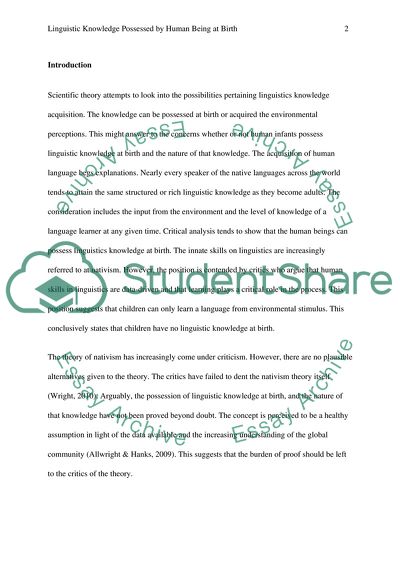Cite this document
(Linguistic Knowledge Possessed by Human Being at Birth Coursework Example | Topics and Well Written Essays - 2250 words, n.d.)
Linguistic Knowledge Possessed by Human Being at Birth Coursework Example | Topics and Well Written Essays - 2250 words. https://studentshare.org/psychology/1798906-what-if-any-linguistic-knowledge-does-a-human-being-possess-at-birth
Linguistic Knowledge Possessed by Human Being at Birth Coursework Example | Topics and Well Written Essays - 2250 words. https://studentshare.org/psychology/1798906-what-if-any-linguistic-knowledge-does-a-human-being-possess-at-birth
(Linguistic Knowledge Possessed by Human Being at Birth Coursework Example | Topics and Well Written Essays - 2250 Words)
Linguistic Knowledge Possessed by Human Being at Birth Coursework Example | Topics and Well Written Essays - 2250 Words. https://studentshare.org/psychology/1798906-what-if-any-linguistic-knowledge-does-a-human-being-possess-at-birth.
Linguistic Knowledge Possessed by Human Being at Birth Coursework Example | Topics and Well Written Essays - 2250 Words. https://studentshare.org/psychology/1798906-what-if-any-linguistic-knowledge-does-a-human-being-possess-at-birth.
“Linguistic Knowledge Possessed by Human Being at Birth Coursework Example | Topics and Well Written Essays - 2250 Words”. https://studentshare.org/psychology/1798906-what-if-any-linguistic-knowledge-does-a-human-being-possess-at-birth.


